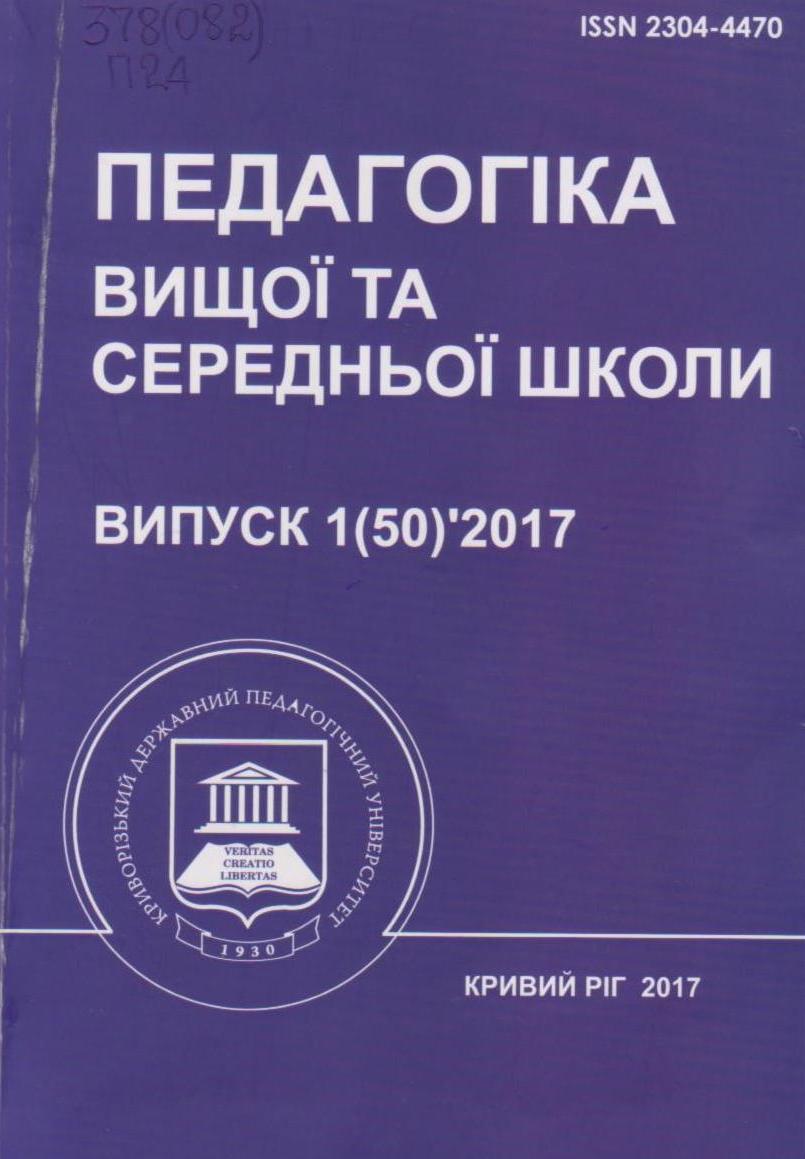The structure of methodical system of training of environmental geoinformatics
DOI:
https://doi.org/10.31812/pedag.v50i0.1278Keywords:
model, teaching system, geoinformation technologies, future engineersAbstract
The aim of the National strategy of education development in Ukraine for the period up to 2021 identified updating the content, forms, methods and means of education through the widespread introduction in educational process of
modern ICT and e-content. Priority development of education is the introduction of modern ICT that enables the improvement of the educational process, the availability and effectiveness of education, preparing young generation for life in the information society. Development of methodical system of training of the special course «Ecological Geoinformatics» plays a main role in its functioning as an essential component of models of use of geoinformation technologies as means of formation of ecological competence of future engineers mountain profile. Therefore, the analysis of its components is relevant, there is the importance to identify the weaknesses and issues that can markedly degrade its quality and without overcoming which its further development is impossible. The article presents the stages of development of methodical system of training of the special course «Ecological Geoinformatics» for future engineers’ mountain profile. The developed model of methodical system of training of the special course «Ecological Geoinformatics» includes suc components as contents, aims and learning technology. The latter includes forms of organization, methods and means of learning, among which are the leading means of geoinformation technologies. Aims, content and technological components of methodical system of training of the special course «Ecological Geoinformatics» have been chosen. The main objective of the training course «Ecological Geoinformatics» is the formation of ecological competence through the combination of special knowledge and skills that provide students with the opportunity to apply the tools of geographic information technology, first in training and then in the future in their professional activities. The implementation of geoinformation technologies in education gives new opportunities for the management of learning and cognitive activity and its intensification, they significantly increase the amount of information as well as expand the scope of the actual research of future engineers’ activity. Despite the advantages and disadvantages in the learning process of engineering the issue of the use of GIS technologies, should be discussed during round tables, trainings, seminars, conferences for in-depth solutions to this problem.
Downloads
Metrics
References
Байдак В. А. Теория и методика обучения математике : наука, учебная дисципліна : [монография] / В. А. Байдак. – 2-е изд., стереотип. – Москва : Флинта, 2011. – 264 с.
Герасименко І. В. Використання технологій дистанційного навчання в підготовці майбутніх бакалаврів
комп’ютерних наук / І. В. Герасименко // Інформаційні технології і засоби навчання. – 2014. – Том 41. – № 3. – С. 232–247. 3. Преемственность в обучении математике : [пособие для учителей] / [сост. А. М. Пышкало]. – Москва : Просвещение, 1978. – 239 с.
Пышкало А. М. Методическая система обучения геометрии в начальной школе : авторский доклад по
монографии «Методика обучения элементам геометрии в начальных классах», представленной на соискание уч. степени д-ра пед. наук : 13.00.02 / А. М. Пышкало. – Москва, 1975. – 60 с.
Черных Л. А. Теоретические основы разработки методической системы обучения / Л. А. Черных // Евристика та дидактика точних наук : зб. наук. праць. – Донецьк, 1995. – Вип. 3. – С. 15–19.
Downloads
Published
How to Cite
Issue
Section
License
Copyright (c) 2017 Світлана Миколаївна Грищенко

This work is licensed under a Creative Commons Attribution 4.0 International License.









